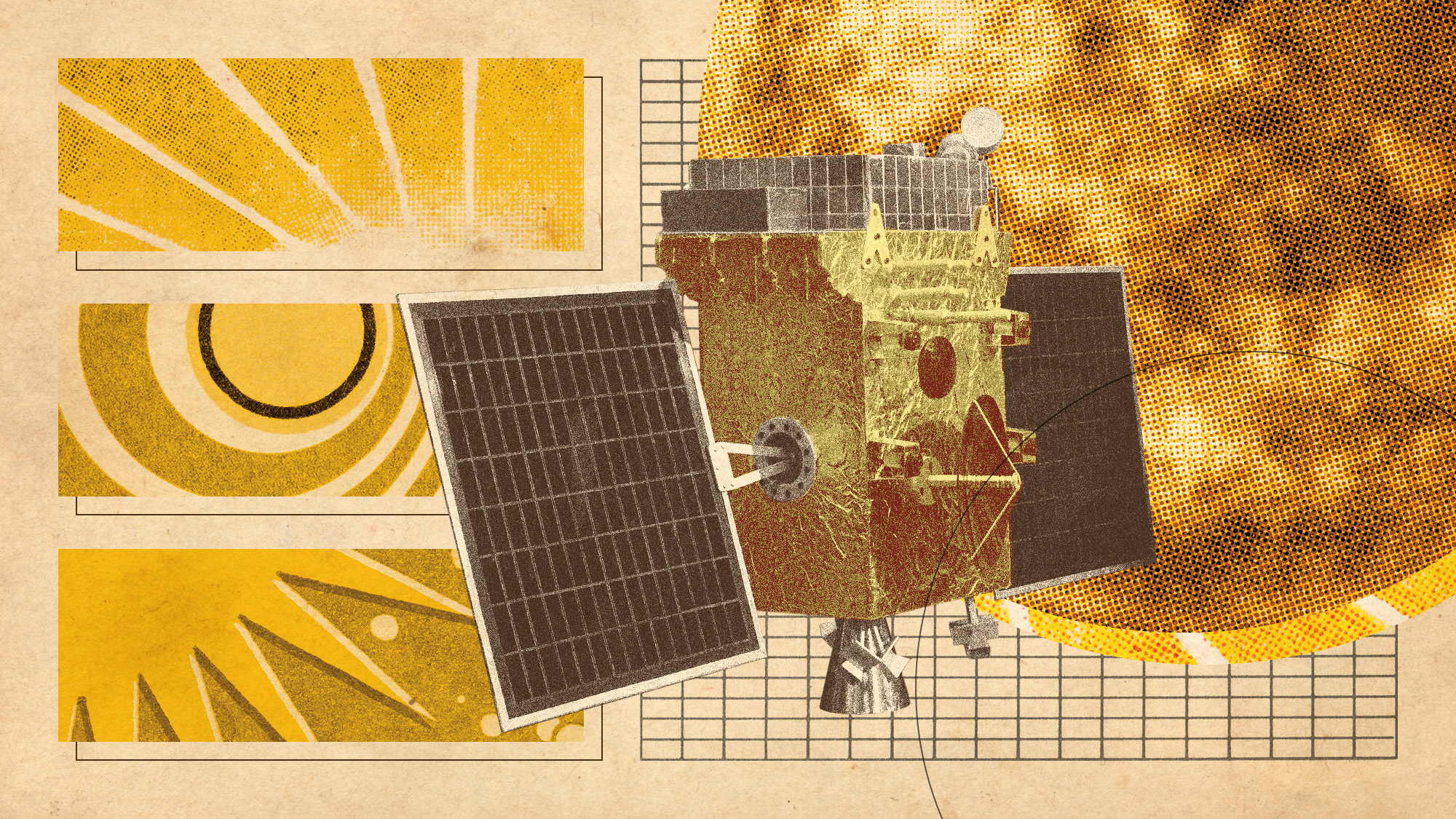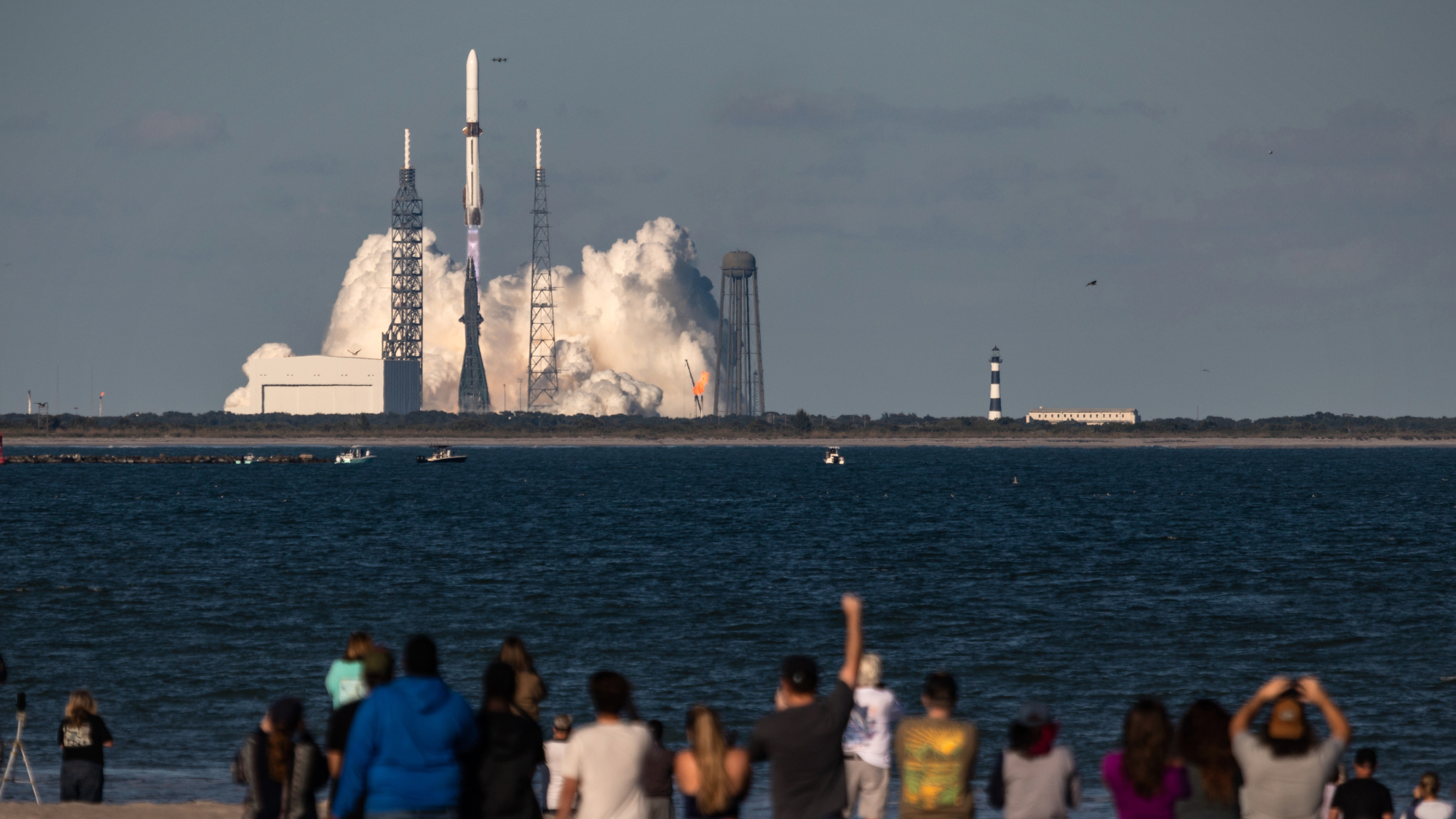Indian space mission's moment in the Sun
Emerging space power's first solar mission could help keep Earth safe from Sun's 'fireballs'

India's space scientists are celebrating their "first significant results": their maiden solar-observation mission could help protect the Earth's power and communication systems from destructive solar storms.
Indian spacecraft Aditya-L1 – named after the Hindu god of the Sun – has captured data that helped the scientists predict the exact time of coronal mass ejections (CMEs). These "massive fireballs" that blow out of the Sun's outermost layer can significantly affect the weather on Earth and satellites in space, said BBC News.
A single CME "could weigh up to a trillion kgs and can attain a speed of up to 3,000km per second", said Professor R Ramesh of the Indian Institute of Astrophysics, who designed the instrument that captured the data. "Now imagine this huge fireball hurtling towards Earth."
The Week
Escape your echo chamber. Get the facts behind the news, plus analysis from multiple perspectives.

Sign up for The Week's Free Newsletters
From our morning news briefing to a weekly Good News Newsletter, get the best of The Week delivered directly to your inbox.
From our morning news briefing to a weekly Good News Newsletter, get the best of The Week delivered directly to your inbox.
'Absolute chaos'
CMEs, like other types of solar storm, can cause "beautiful auroras" near the North and South Poles, said the BBC. But they can also "cause mayhem" by interfering with Earth's magnetic field, making satellites malfunction or knocking down power grids. In 1989, a CME "knocked out part of Quebec's power grid for nine hours", leaving six million Canadians without power.
"Today, our lives fully depend on communication satellites," Professor Ramesh told the broadcaster, and CMEs can "trip the internet, phone lines and radio communication", leading to "absolute chaos".
But, if space scientists can spot what's happening on the Sun in real time, this can "work as a forewarning to switch off power grids and satellites and keep them out of harm's way".
'Breathtaking' ambition
Nasa, the European Space Agency, and Japanese and Chinese space scientists have been running solar-observation missions for decades, but India's solar space mission is new. Aditya-L1 was launched by the Indian Space Research Organisation in September 2023, and "travelled 1.5 million km from Earth" to orbit the Sun, said The Guardian.
A free daily email with the biggest news stories of the day – and the best features from TheWeek.com
"India's space ambitions are at a critical juncture," said Nature, "buoyed by the success of its missions to Moon and Mars, and driven by bold policies" that support "cutting-edge space research" and "radical ideas".
The country has already "accomplished great things" in space, said US politics site The Hill. Last year, it became the first to land a probe on the Moon's south pole, has orbited Mars, and has also launched two astronomy missions.
This year, India has announced several new endeavours and approved 227 billion rupees (£2.1 billion) – its "largest-ever allocation of funds" – for space projects, said BBC News. Plans include a crewed mission to the Moon, sending an orbiter to Venus, and the first phase of a space station. Its ambition to become "a major space power" – on par with the US and China – is "breathtaking", said The Hill.
Harriet Marsden is a senior staff writer and podcast panellist for The Week, covering world news and writing the weekly Global Digest newsletter. Before joining the site in 2023, she was a freelance journalist for seven years, working for The Guardian, The Times and The Independent among others, and regularly appearing on radio shows. In 2021, she was awarded the “journalist-at-large” fellowship by the Local Trust charity, and spent a year travelling independently to some of England’s most deprived areas to write about community activism. She has a master’s in international journalism from City University, and has also worked in Bolivia, Colombia and Spain.
-
 Pros and cons of geothermal energy
Pros and cons of geothermal energyPros and Cons Renewable source is environmentally friendly but it is location-specific
-
 Should the right to trial by jury be untouchable?
Should the right to trial by jury be untouchable?Today’s Big Question With a crown court backlog of around 80,000 cases, David Lammy says ‘status quo cannot go on’
-
 Australia’s teens brace for social media ban
Australia’s teens brace for social media banIn The Spotlight Under-16s will be banned from having accounts on major platforms
-
 Blue Origin launches Mars probes in NASA debut
Blue Origin launches Mars probes in NASA debutSpeed Read The New Glenn rocket is carrying small twin spacecraft toward Mars as part of NASA’s Escapade mission
-
 ‘The Big Crunch’: why science is divided over the future of the universe
‘The Big Crunch’: why science is divided over the future of the universeThe Explainer New study upends the prevailing theory about dark matter and says it is weakening
-
 The moon is rusting
The moon is rustingUnder the radar The Earth is likely to blame
-
 Panspermia: the theory that life was sent to Earth by aliens
Panspermia: the theory that life was sent to Earth by aliensUnder The Radar New findings have resurfaced an old, controversial idea
-
 Africa could become the next frontier for space programs
Africa could become the next frontier for space programsThe Explainer China and the US are both working on space applications for Africa
-
 Canyons under the Antarctic have deep impacts
Canyons under the Antarctic have deep impactsUnder the radar Submarine canyons could be affecting the climate more than previously thought
-
 NASA is moving away from tracking climate change
NASA is moving away from tracking climate changeThe Explainer Climate missions could be going dark
-
 Atoms into gold: alchemy's modern resurgence
Atoms into gold: alchemy's modern resurgenceUnder the radar The practice of alchemy has been attempted for thousands of years